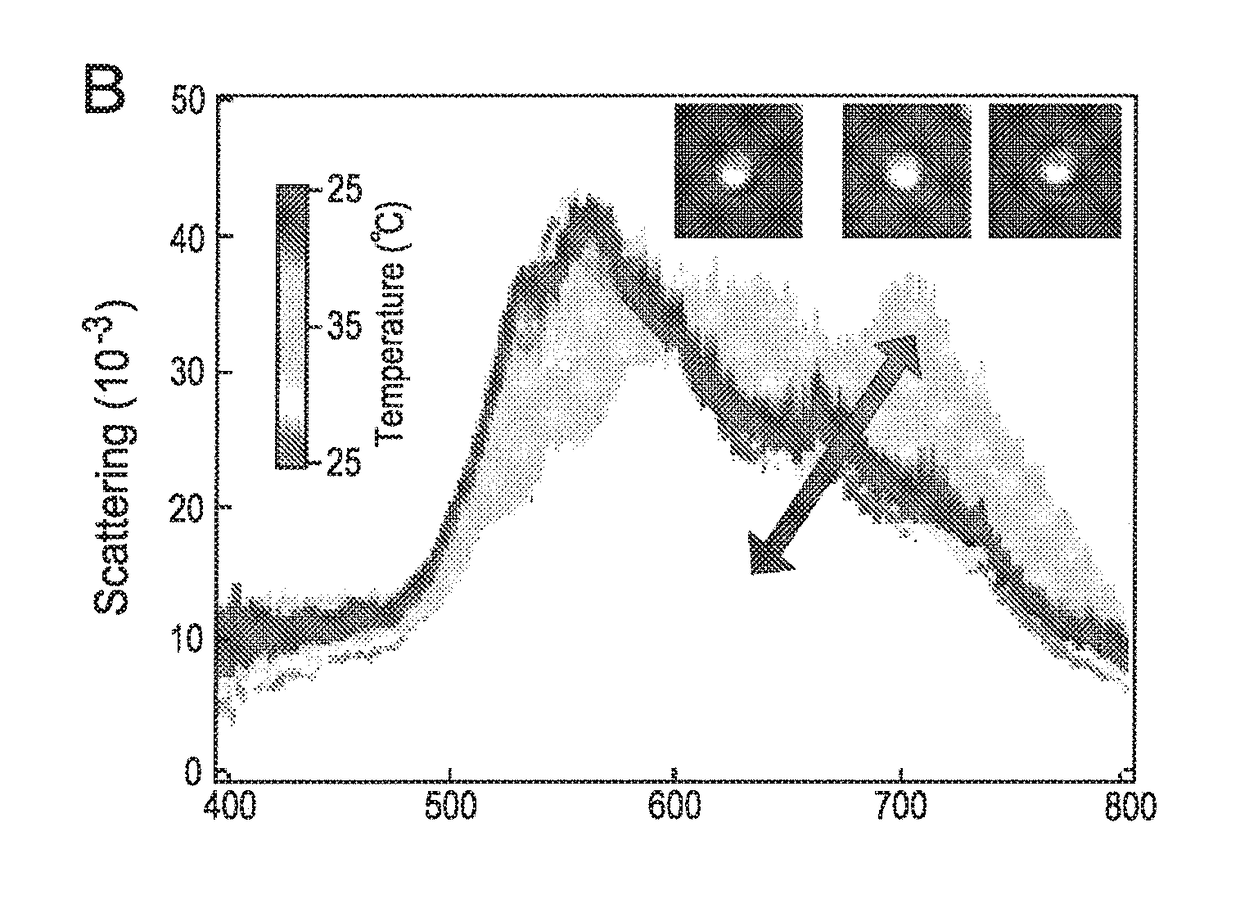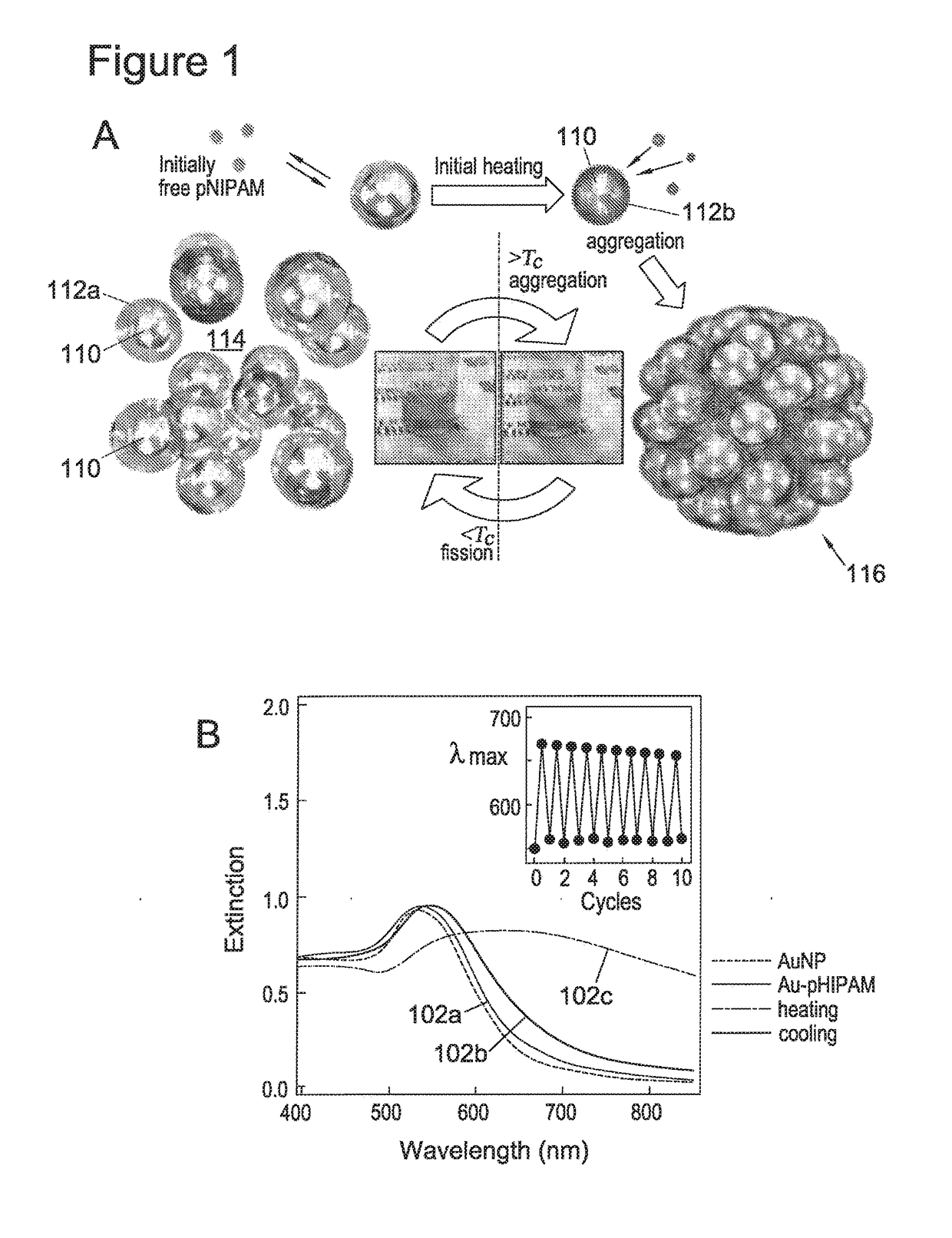Materials and devices
a technology of materials and devices, applied in the field of composite materials, can solve the problems of difficult control, low actuation force at sub-micron scale, and only slow application of forces, and achieve the effect of increasing the stored elastic energy and facilitating the assembly/disassembly process
- Summary
- Abstract
- Description
- Claims
- Application Information
AI Technical Summary
Benefits of technology
Problems solved by technology
Method used
Image
Examples
Embodiment Construction
[0050]Broadly speaking we describe techniques which, in embodiments, bind temperature-responsive polymers to charged Au nanoparticles, storing elastic energy that can be rapidly released under light control for repeatable nano-actuation. Heating above a critical temperature Tc=32° C. using plasmonic absorption of an incident laser, causes the coatings to expel water and collapse to the nanoscale, allowing a controllable number of nanoparticles to tightly bind in clusters. Surprisingly, by cooling below Tc their strong van der Waals attraction is overcome as the polymer expands, exerting nanoscale forces per unit mass 25 times larger than previously achieved. The techniques are useful, inter alia, for the design of diverse colloidal nanomachines.
[0051]Thus we have designed a colloidal actuator system with high energy storage (>1000 kBT / cycle) and fast (GHz) release mechanism. Based on gold spherical nanoparticles (Au NPs) coated with the amino-terminated polymer poly(N-isopropyl-acry...
PUM
| Property | Measurement | Unit |
|---|---|---|
| Density | aaaaa | aaaaa |
| Nanoscale particle size | aaaaa | aaaaa |
| Nanoscale particle size | aaaaa | aaaaa |
Abstract
Description
Claims
Application Information
 Login to View More
Login to View More - R&D
- Intellectual Property
- Life Sciences
- Materials
- Tech Scout
- Unparalleled Data Quality
- Higher Quality Content
- 60% Fewer Hallucinations
Browse by: Latest US Patents, China's latest patents, Technical Efficacy Thesaurus, Application Domain, Technology Topic, Popular Technical Reports.
© 2025 PatSnap. All rights reserved.Legal|Privacy policy|Modern Slavery Act Transparency Statement|Sitemap|About US| Contact US: help@patsnap.com



